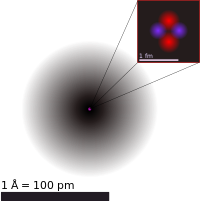
Photo from wikipedia
Metal single-atom materials have attracted tremendous attention in the research field of lithium-sulfur (Li-S) batteries because they can effectively improve the reaction kinetics of sulfur cathodes. However, it is still… Click to show full abstract
Metal single-atom materials have attracted tremendous attention in the research field of lithium-sulfur (Li-S) batteries because they can effectively improve the reaction kinetics of sulfur cathodes. However, it is still difficult to determine the best metal single-atom catalyst for Li-S batteries, due to the lack of a unified measurement and evaluation method. Herein, a series of metal single-atom- and nitrogen-doped graphene materials (M-NG, M = Fe, Co, Ni, Ir, Ru) have been prepared as the catalysts for promoting the reaction kinetics of the sulfur reduction reaction process. Using rotating disk electrode measurements and density functional theory-based theoretical calculations, Ni-NG was screened out to be the best catalyst. It is found that Ni-NG materials can provide a kinetically favorable pathway for the reversible conversion of polysulfide conversion, thus increasing the utilization of sulfur. By coating the Ni-NG materials on the separator as a multifunctional interlayer, a commercially available sulfur cathode presents a stable specific capacity of 701.8 mAh g-1 at a current rate of 0.5C over 400 cycles. Even with a high sulfur loading of 3.8 mg cm-2, a high areal capacity of 4.58 mAh cm-2 can be achieved. This work will provide a fundamental understanding of efficient single-atom catalyst materials for Li-S batteries.
Journal Title: ACS applied materials & interfaces
Year Published: 2022
Link to full text (if available)
Share on Social Media: Sign Up to like & get
recommendations!